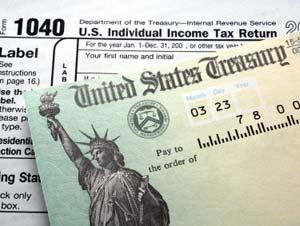How to get your cut of the 300 billion in tax credits
This story is adapted from a broadcast audio segment; use audio player to listen to story in its entirety.
April 15 — that dreaded day when taxes are due — is right around the corner. For working families, there is a bright spot: billions of dollars in tax credits.
“The Recovery Act also provided nearly 300 billion dollars in tax cuts and tax incentives,” Treasury Secretary Timothy Geithner announced recently. “They’re providing tax relief for 95 percent of working families, making it easier to buy a new home, and helping people pay for college tuition.”
Financial expert Beth Kobliner says it’s critical for individuals to get a handle on those tax credits and deductions. “Unlike the banks, the government is not going to write you a check — you have to do the work.”
According to Alan Dluglash, a certified public accountant, many of the deductions and credits are industry incentives, in the form of car purchase, first-time home buyer and energy credits.
“These are not tax cuts,” said Dluglash. “They’re industry incentives that Congress decided to put through the Internal Revenue code so they can call them tax cuts. Remember when you’re going to buy something, it’s better to get your information from the industry personnel than from the tax accountant.”
The money is in these credits, says Kobliner. “If you get a $1000 credit, you get $1000 off your taxes. If you get a deduction, that means if you’re in the 30 percent tax bracket, you only get $300 in your pocket. So you want to make sure to maximize those credits.”
These are just few to pay attention to:
– First-time homebuyer credit: up to $8,000 for people who bought a new home in 2009
– Student loan interest credit: up to $2,500 if you earn under $60,000 annually
– Savers credit: a $1000 government match for money put into an IRA
– Energy credit: for purchases of energy-efficient appliances
– Volunteer work credit: deductions for costs related to volunteer work
Also of note: for the first time, the first $2,400 of unemployment benefits received last year is tax-free.
“It is very important to look at last year’s return,” said Dluglash. “But things change. Your income levels go up, your income levels go down. You’ve got to look at your situation, but you’ve got to look at it brand new.
Kobliner suggests more people handle their own taxes, even though the process may be intimidating. Her tips can be found here.
“The Takeaway” is a national morning news program, delivering the news and analysis you need to catch up, start your day, and prepare for what’s ahead. The show is a co-production of WNYC and PRI, in editorial collaboration with the BBC, The New York Times Radio, and WGBH.
